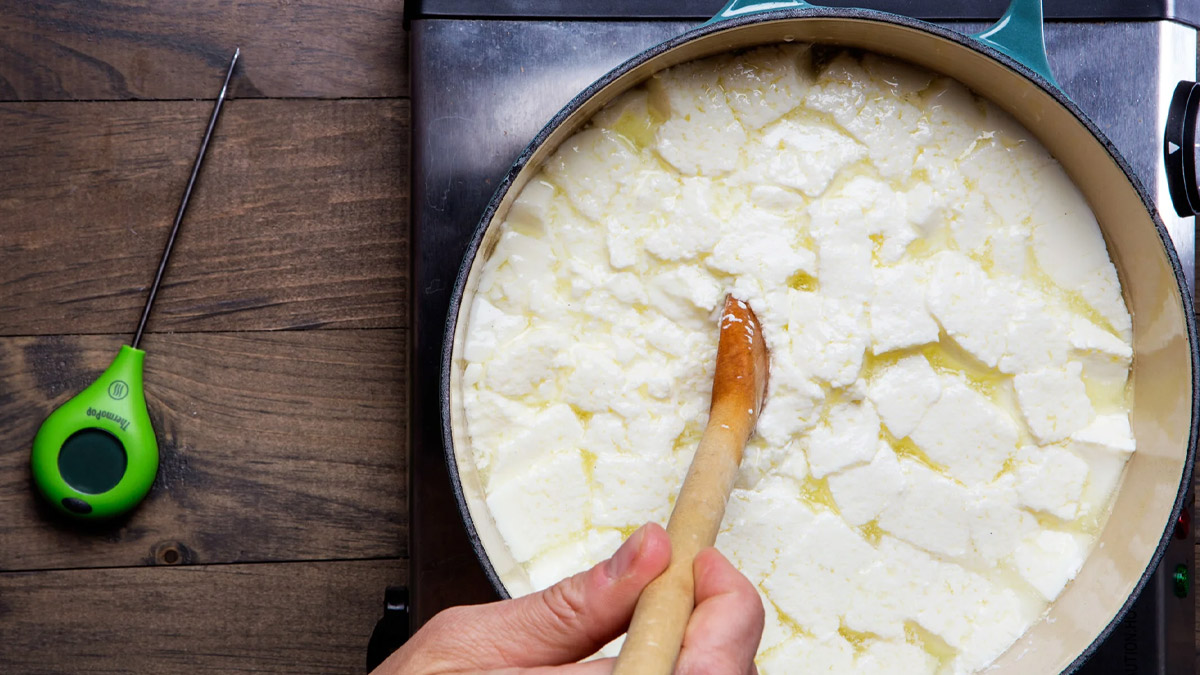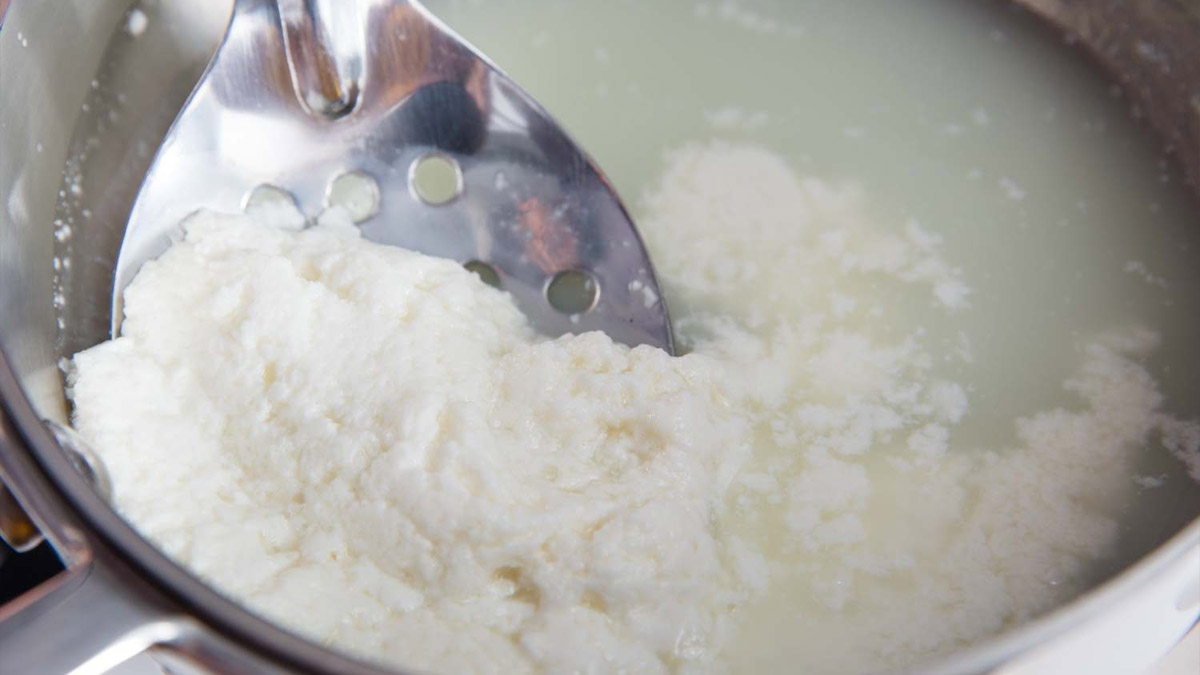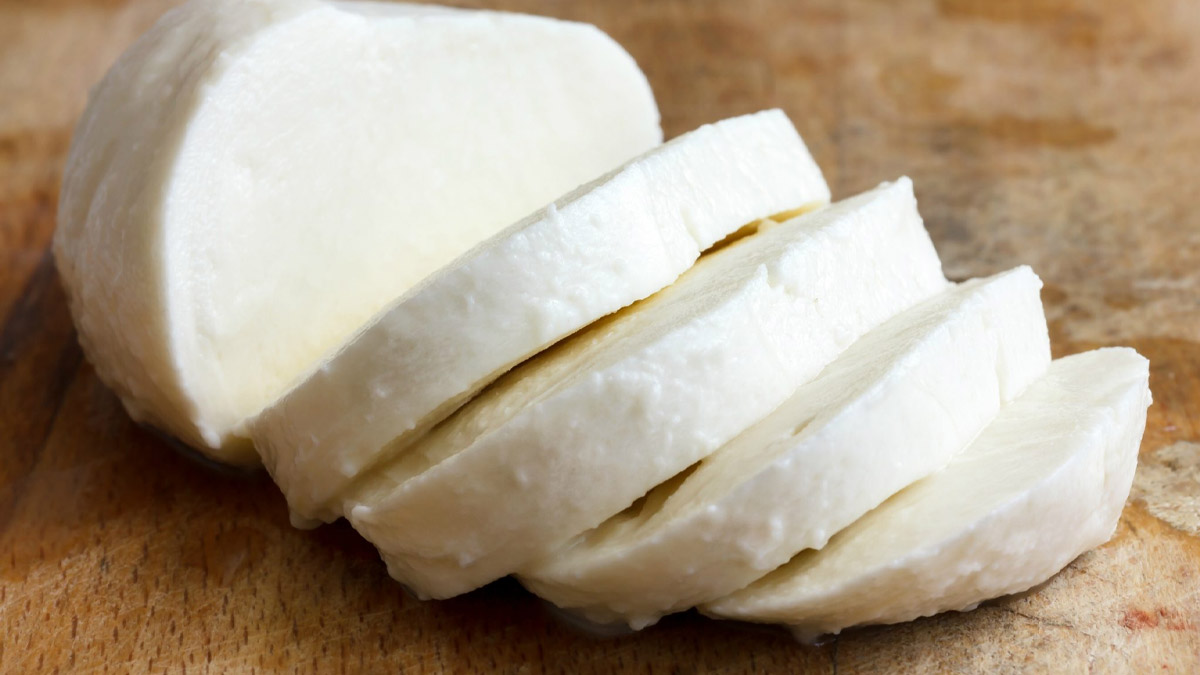on
Have you ever wondered why so much of Italian cooking involves both Mozzarella and Ricotta cheese? The reason is based on frugality and the desire to let nothing go to waste. Simply put – Ricotta is made from the whey leftover after making Mozzarella cheese. And the good news is both of these cheeses are quick and easy to craft.
I like to double my mozzarella recipe, that way I have one fresh, to eat while its still hot and one to pop in the freezer for easy grating later. Plus that will give me the 2 gallons needed of whey to make the ricotta.
I prefer to use fresh raw goats milk, however, you can use store-bought goat or cows milk for this recipe, just make sure it’s not Ultra-pasteurized.
Mozzarella Ingredients
- 1 Gallon unskimmed milk, I use raw goats milk from our Nigerian Dwarf dairy goats.
- ¼ teaspoon Lipase. Diluted into ¼ cup cool water. Allow this to sit 20 minutes prior to starting.
- 1½ teaspoon citric acid. Diluted into ½ cup cool water
- ½ teaspoon Liquid rennet. Diluted into ¼ cup cool water
- Salt and herbs – optional
Mozzarella Instructions

- Dilute Citric Acid into ¼ cup cool water. Allow this to sit 20 minutes.
- In a large kettle add citric acid to bottom of the pot. Add milk and slowly heat to 55 degrees.
- Add diluted Lipase. Continue to heat milk to 88 degrees. Stirring frequently.
- While stirring constantly, add diluted Rennet. Still for only 30 seconds. Remove from heat and allow to sit, untouched for 5 minutes.
- Check the curd. It should have a clear separation between curd and whey (see image). If the whey is milking, allow it to sit for a few more minutes.
- Cut the curd with a long knife that reaches the bottom of the pot. Make small 1inch slices. (see image).
- Return to the burner and heat the curds and whey to 105 degrees, gently stirring the curds around the pot.
- Remove from the heat and continue to softly still for 3 minutes.
- Using a slotted spoon, remove the curds and place them into a heat proof bowl. Reserve the whey.
- In the microwave, heat for 60 seconds.
- Carefully remove bowl from the microwave. Pour excess whey back into kettle. Add a pinch or two of salt or herbs now if desired. (highly recommended)
- Using a wooden spoon “knead” the cheese to distribute the heat.
- Return to the microwave and heat for 35 seconds. Stretch the curd as you would taffy. This is HOT. Repeat twice, pouring off excessive whey each time.
- When the cheese is smooth and shiny its ready. Roll into a ball, drizzle with olive oil and eat while its warm or cover and refrigerate.
- Tip: If you are wanting to grate this fresh cheese, try freezing it first and it will grate more easily.
Once the mozzarella if finished it is time to start on the smooth, creamy ricotta that utilizes the leftover whey from making the mozzarella. (If you didn’t double the recipe on the Mozzarella you won’t have enough whey to make the Ricotta, so remember to plan ahead and save the whey! Whey can also be used as a substitute for milk in other dishes so even if you only made a single batch of Mozzarella you still probably want to save that whey!
Ricotta Ingredients
- 2 gallons fresh Whey. (not older then 3 hours)
- 1 quart whole milk
- 1/4 cup Apple Cider Vinegar (ACV)
- Herbs – optional
Ricotta Instrutions

- Heat the whey and milk to 200 degrees. Stirring often. Turn off heat and while stirring add in the Apple Cider Vinegar.
- Let the whey/ACV mixture sit untouched for 15 minutes.
- Line a colander with a flour sack or a cheese bag and carefully pour in the mixture, reserving the whey again. **see note. Careful THIS WILL BE HOT!
- Tie up the bag to a cabinet knob and over a large bowl, allow the ricotta to drip overnight.
- In the morning plate the delish ricotta. Store in the refrigerator for up to 5 days.
TIP: Don’t expect your first time making cheese to come out like fancy, wood-aged artisan cheese, because it won’t. But it will be delicious, fun and a gateway into other cheese making.
**NOTE: Save the whey after making the ricotta. This protein-packed liquid is an excellent milk substitute in baking. It can also be used as an inoculant in fermenting, use it as a starter to make sauerkraut and also fermenting chicken feed. It also freezes exceptionally well.
Cheese Making Resources
For supplies and books on cheese making visit the website CheeseMaking.com. I have had the privilege of taking cheesemaking classes from several of the authors whose books appear on those pages. I especially like the book Goats Produce Too! which includes recipes for cheesemaking, yogurt, ice cream, fudge, pies and puddings, goat meat and a few non-edibles like soap and whitewash.
Get access to premium content and more!





